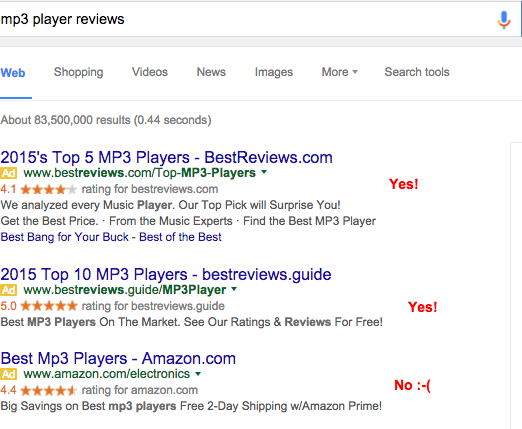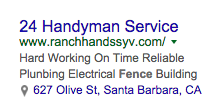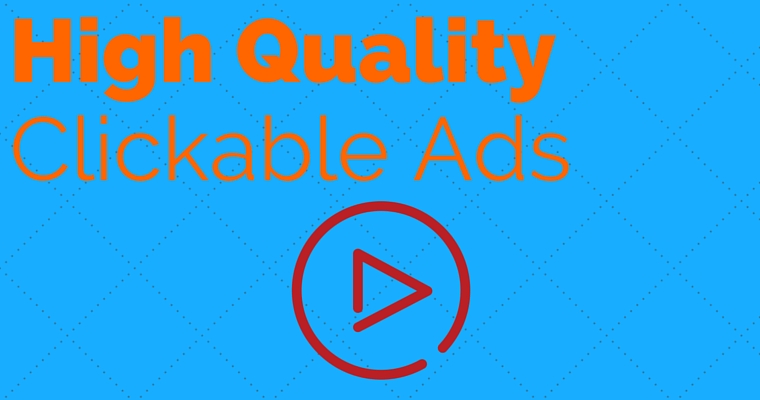The whole PPC experience is frustrating. You want to throw your coffee mug against the wall, but that type of behavior is frowned upon in your co-working space.
Your cost per click is too high to ever be profitable–certainly much higher than you were led to believe it would be. You wonder where all these mysterious five cent clicks you read about in industry blogs have gone.
This high cost per click is a real business problem. To understand why the cost is so high, you review your impression share report and a new problem is brought to light: Your ads hardly even show.
You took the time to read blogs about writing great ads, spent valuable hours carefully crafting your campaigns, and even made high quality individualized landing pages. Yet the price per click climbs every day. You wish there was something you could do about it, and there is.
You just need to align your advertising strategy differently.
You Have Not Aligned Yourself With the Ad Networks
The prevailing wisdom is that you need to align yourself with the customer and optimize your account for conversions, and to an extent that is certainly true. Without conversions, it makes no business sense to even run PPC campaigns.
However, you also need to align yourself with the networks you advertise on.
The way it works is that (generally) the ad networks only make money when someone clicks on their ads. Hence, ad networks like AdWords and Facebook have introduced financial incentives to entice advertisers to make better and more clickable ads.
They reward advertisers who have clickable ads in an inverse relationship. The higher the click-through rate of the ad the lower the cost per click to the advertiser. The ad networks also make it their business to discontinue showing ads that do not have high enough click-through rates.
If you want to lower your cost per click, you need to increase the quality and click-through rate of your ads.
Optimize for Both the Ad Networks and Your Potential Customers
The most famous (and first) incentive for clickable ads is Google and their quality score.
To understand why quality score evolved this way, we need to hop in our Delorean time machine for a moment and go back to the year 2000. It was the year that Britney Spears ruled the airwaves with her classic hit “Oops I did it Again” and also the year when Google started its PPC advertising platform.
Back then, the gist of online advertising was the advertiser who could pay the most would be shown (they also showed ads on a CPM basis only). (This is basically how TV advertising still works.) However, in an online environment this led to a poor advertising experience for all involved:
- The user saw ads that were not relevant to them.
- The advertiser had visitors to their site who were not all that interested in their product or service.
- Google had users and advertisers who were unhappy with their results of using the search engine.
Google realized they needed to change-up the game to make all parties happy.
In 2005, they introduced the concept of quality score and it changed everything. Quality score was how relevant the ad was to the search, and as a proxy to tell this relevance Google heavily relied on click-through rate. What Google recognized is that each party involved in online advertising has a complementary goal:
- The user wants to be shown results which are most relevant to their search, even if those results include relevant ads.
- The advertiser only wants clicks of visitors to their site who are interested in their product or service.
- Google wants users and advertisers who are satisfied with their search experience.
Google began using quality score as an incentive for high quality, clickable ads and their profits began to soar—from $1.88 Billion in 2004 to $37.91 Billion in 2013.
The formula of click-through rate and ad relevance was a success and as other networks came into being, they also provided financial incentives for highly clickable and relevant ads as well.
Below you will find three ways to create ads that increase your click-through rate, decrease your cost per click and get your ad campaign to produce the return on ad spend that you know it can!
How to Write High-Quality Clickable Ads (No Matter What Network You are On)
1. Split Test Your Ads
The best way to find out what ads garner the highest click-through rate is to actually to test it in the real world. No amount of guesswork can beat real world data. Split testing allows you to get that real world data.
Split testing your ad means you test one variable across two ads for a specific outcome. You do this scientifically until you get a statistically significant result—usually a 95% confidence interval. Variables can include different headlines, images, ad copy, offers, and even different display URLs. Outcomes can include conversion rates, click-through rates, and overall conversions. For the purpose of aligning yourself with the ad network, you are going to begin by testing for click through rate.
Many new to PPC start with small variables like changing where a comma is placed and then get frustrated when the split test never completes to a reasonable confidence interval. I recommend starting with big variables like a different headline or my favorite a different value proposition.
Once you have decided what you would like to test, let it run with no interference until the tests complete. There are some great testing tools to work with – I highly recommend AdAlysis for AdWords and here is a great article about split testing your ads in Facebook.
This is not a one-time process—as you test you will find winning ads, and when you do it is time to immediately test them against a new challenger. Your goal is to always have your click through rate climbing.
2. Recognize Where the User is at in the Buying Cycle
Users want particular offers and respond to ads differently depending on where they are at in the buying cycle. If you want to achieve a high click through rate on your ads you need to understand where the customer is at in the buying cycle and meet them there.
Advertisers who aggressively go for the immediate sale when the user is simply looking for information are going to have a much lower click-through rate, because although you may have the product or service the user is looking for – it is not what they are looking for at that moment.
In AdWords and Bing, a user can be placed in a different stage in the buying cycle based on their searches. Take the search query mp3 player reviews versus buy an mp3 player.
Though they are similar search queries, understanding and meeting the user where they are at in the buying cycle will help optimize your click through rate. For the search query mp3 player reviews you may want to offer a whitepaper about the different capabilities of mp3 players in exchange for the users email, whereas with buy an mp3 player you might want to highlight a sale to pique the user’s interest and receive those clicks.
 In places like Facebook where you don’t get search queries, you have to use context clues based on demographics and psychographics to understand where a user is at in the buying cycle. For example, we run a Facebook ad campaign for an annuity company (which is a type of retirement plan). We offer different eBooks based on the age of the user because as they get closer to retirement years (demographics) they have different concerns which these specific eBooks addresses.
In places like Facebook where you don’t get search queries, you have to use context clues based on demographics and psychographics to understand where a user is at in the buying cycle. For example, we run a Facebook ad campaign for an annuity company (which is a type of retirement plan). We offer different eBooks based on the age of the user because as they get closer to retirement years (demographics) they have different concerns which these specific eBooks addresses.
3. Be as Specific as Possible
Users type in specific searches, and the more your ad precisely matches those specific searches the higher your click-through rate will be. This is pretty obvious from the perspective of the user why specificity matters.
As an example, let’s say you have a broken fence, so you type in fix my fence as your search query.
 You are shown a variety of ads, some of which are general to repair work. As an example of general repair work this ad appears:
You are shown a variety of ads, some of which are general to repair work. As an example of general repair work this ad appears:
 While you probably are looking for someone who is on time and reliable, your specific problem is your fence. It looks like it is one of the things that they do, but is not the main service and for that reason not specific enough. Compare that general ad to the specificity of the ad below:
While you probably are looking for someone who is on time and reliable, your specific problem is your fence. It looks like it is one of the things that they do, but is not the main service and for that reason not specific enough. Compare that general ad to the specificity of the ad below:
 That matches it exactly—why would you not click on it and click the more general ad? You can see how it is matches your search query almost exactly and as such will probably have the highest click through rate.
That matches it exactly—why would you not click on it and click the more general ad? You can see how it is matches your search query almost exactly and as such will probably have the highest click through rate.
On Facebook, this means targeting your ads as tightly as possible based on (you guessed it!) psychographics and demographics. You can utilize tactics like:
- Mentioning the city you are advertising in. Copy such as Looking for a wedding cake in Philadelphia? is much more specific than Looking for a wedding cake?
- Utilizing interests. If you are selling baseball hats you could have your ads be specific to Red Sox fans by having only having images of the models in Red Sox gear.
- Utilizing age-appropriate imagery. You can segment your ads by age and have the images match that. For example, those ads targeted towards people in their 20’s could have images of people in their 20’s so that they can relate and the same goes for people in their 30’s, 40’s and 50’s
What tips do you have for crafting high-quality clickable ads?
Image Credits
Featured Image: Image by Adam Lundquist
All screenshots by Adam Lundquist. Taken November 2015.




